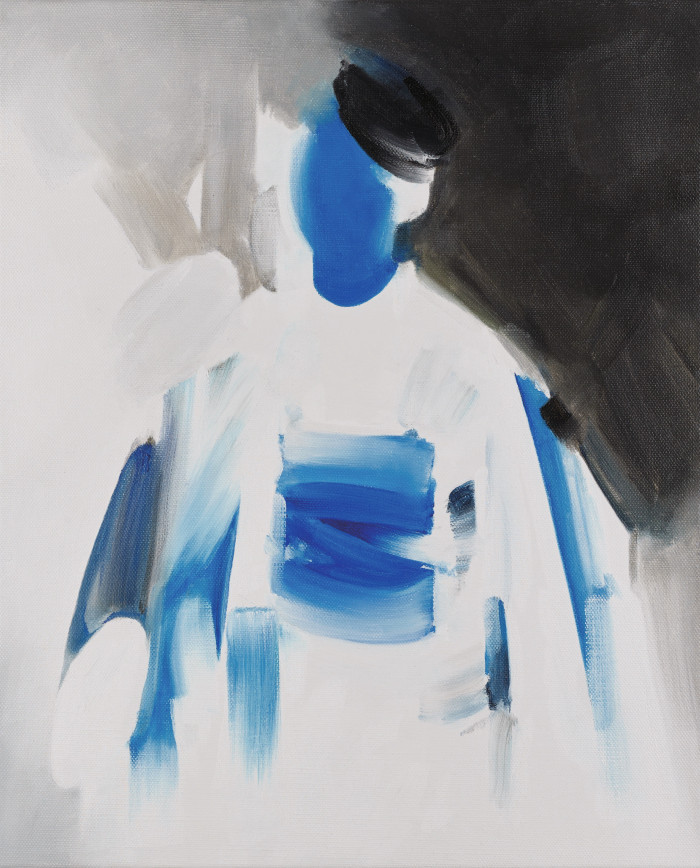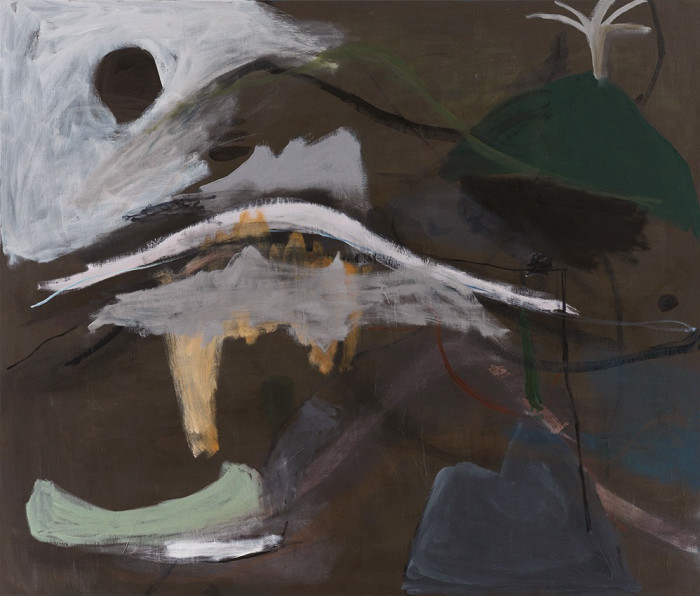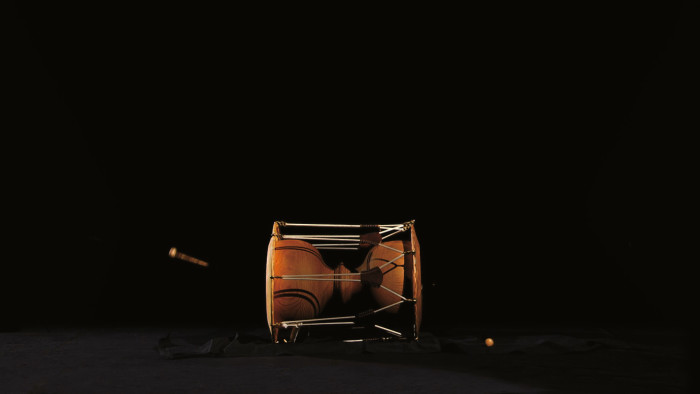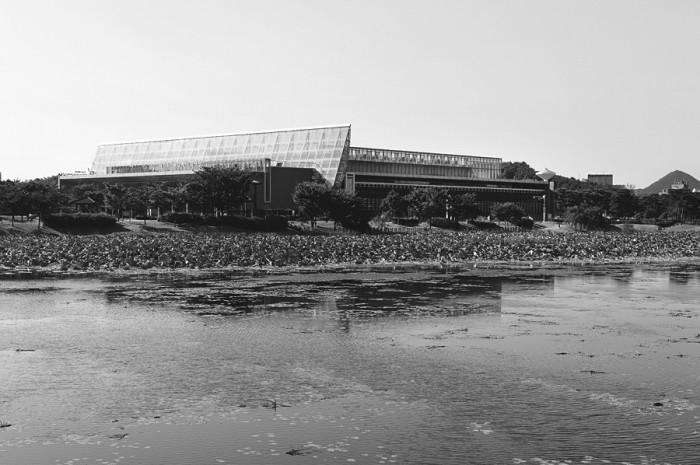경기문화재단
Invisible things (2)
Gyeonggi Museum of Modern art
This catalogue is published in conjunction with 2017-2018 Korea–Germany Contemporary Art Exchange Exhibition Irony & Idealism. It documents all exhibitions and artworks at 3 venues in Korea and Germany-Gyeonggi Museum of Modern Art, KF Gallery and Kunsthalle Münster-from September 2017 until September 2018.
|
Kim Yoonseo(Curator, Gyeonggi Museum of Modern Art)
In a similar vein, Michal van Ofen’s work also begins with paintings by other artists. That is, Van Ofen’s work deals with the portraits, landscapes, or genre paintings completed by relatively less known artists who lived in Germany or Italy in the nineteenth century. Van Ofen, who studied photography before using painting as his major medium, focuses on the transitional moment when visual art became conceptual rather than representational, influenced by the invention of the camera in the nineteenth century. By eliminating the forms of images from preexisting paintings, Van Ofen moves back and forth between the artists of the nineteenth century and those of our contemporary era. The title of his series of works, Symbolic Extension, demonstrates the epitome of such a timespan and abstractness.
Like Michal van Ofen, the Korean artists Ahn Jisan and Yoon Jongsuk show their paintings at this time. Although the two artists are exploring different subject matters, their works search for the answers of their questions about the entity of images. Ahn introduces his paintings which focus on the concepts of “disappearance” and “falling” in the GMoMA. His paintings visualize some specific senses of his body that he directly experiences ―the senses are, for instance, a slippery feeling of touch when applying paints to his body and washing them off; or a feeling of danger like the moment before falling from the edge of a chair. Ahn’s paintings are completed through some preparations such as representing his bodily experience or making/transforming miniatures into his paintings. In doing so, he has mastered a bodily sense forgotten in flat canvases while focusing on expanding the potentials of paintings. This is the way in which Ahn researches the relationship between the dead “images” and paintings via his body.

Michal van Ofen, Virtue Turn 7
oil on canvas, 55×45cm, 2016
However, Yoon Jongsuk has been working for the series of paintings Mind Landscape. For her, “image” functions as memory or imagery. She participated from the Germany side at this time, but she is Korean―she moved to Germany at the age of 29, and has since lived and worked in Düsseldorf. The ridges, winding roads, and traditional pavilions in her paintings look familiar to Koreans. In a sense, they reflect Korean landscapes that remain in her mind while reminding us of traditional Korean inkand- wash paintings, as well as German Expressionism. As Yoon’s unique visual language, her use of lines resembles the brush-touch observed in East Asian calligraphy or ink-and-wash paintings. Canvases seem not enough to capture the landscapes which exist in her mind, not in front of our eyes.

Yoon Jongsuk, River oil on canvas, 170×200cm, 2016
As for Gimhongsok, who vitalizes the exhibition space via various media, the final productions are visualized as sculpture, painting, film, and performance. However, the starting point for his actual work is language. He crosses the extreme borders between art and non-art, labor and art, and original and translated versions in order to see the in-between. His space in the GMoMA was filled with his wall paintings which resemble children’s graffiti, big dolls, signboards, and video displayed via an 11-inch monitor. By introducing all types of works ―sculpture, painting, and videos―that he has produced since his labor series, he visualizes the social agreement and the irony of today’s art that makes contemporary art be perceived as art. Manfred Pernice also brought various materials into the exhibition space, such as a vanished panel, an elephantshaped piece of ceramic, a wooden doll, and a book that we could easily find in our daily lives. By uniting and reuniting these materials, he focuses on how the raw materials lose their original function while bringing a new relationship. His works were completed through various ways of organizing materials ―spreading into three places, gathering all together, or heading up. In so doing, a different narrative was produced at each venue.
At the final reaching point for the audience in the GMoMA, is Youngwhan Bae’s Anxiety-Seoul 5PM placed. For this work, he built a Korean traditional bell tower in the exhibition space. Here, only four columns are ironically placed without a bell. Seating beside the bell tower, the audience can hear the multiple layers of bell sounds. Some elements of the installation and bell sounds are directed from the bell tower to the outdoors and attract the audience’s walk to the terrace of the museum. Then the audience can see a green forest and feel a breeze on their bodies. Bae seems to speak to us that the “real art” that we want to see through our eyes is in our everyday lives―not inside but outside the museum. Based on the natural human desire to see, this exhibition reacts by questioning invisible concepts.

Youngwhan Bae, Abstract verb: Dance for ghost dance / Abstract verb: Knock
A Korean poet Kim Soyeon once said, “Poems question but do not provide enough answers.” Here, the subject, poem, is able to be replaced by contemporary art. I can discover the figures of poets, scientists, and travelers through the participating artists. I appreciate the efforts of all of the participating artists who worked on the three exhibitions over the past two years. During the relatively long time in took to prepare the traveling exhibitions, I again realized the fact that a more difficult and important thing is to understand people than to learn knowledge, skill, and administrative work required for the organization and coordination of international collaborative exhibitions. I would like to express my gratitude for Ahn Mihee, Head of KF Global Center and Yang Jeongsun, Senior Program Officer in the Korean Foundation; the director Kwon Sehoon and the curator Jung Kahee in the Koreanisches Kulturzentrum; the director Gregor Jansen in the Kunsthalle Düsseldorf; Meng Oanho in the Goethe Institut, as well as all of the staffs in the Kunsthalle Münster including Director Gail Kirkpatrick and assistant curator Isabelle von Schilcher who worked arduously in preparing the German exhibitions. I also appreciate the contribution by graphic designer Dokho Shin who fabulously visualized the features of this exhibition, which are not caught via a glance but via groping. Finally, I would like to express my thankfulness to the docents and volunteers who made an effort to communicate with the audience in the GMoMA.
Gyeonggi Museum of Modern Art 268, Dongsanro, Danwongu, Ansansi, Gyeonggido 15385, South Korea |
|
KF Gallery 2nd fl., Mirae Asset CENTER 1 Building West Tower 26, Eulji-ro 5-gil, Jung-gu, Seoul 04539, South Korea |
|
Kunsthalle Münster Hafenweg 28, 48155 Münster, Germany |
|
<ggc의 모든 콘텐츠는 저작권법의 보호를 받습니다.>
세부정보
IRONY & IDEALISM
Publisher/ Sul Wonki
Chief Editor/ Choi Eunju
First Edition/ July 31. 2018
Published by/ Gyeonggi Museum of Modern Art
List of Artists/ Ahn Jisan, Bae Young-whan, Björn Dahlem, Gimhongsok, Hwayeon Nam, Michael van Ofen, Manfred Pernice, Yoon Jongsuk


